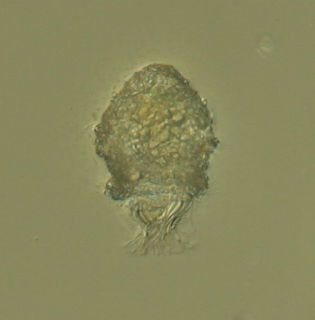After a long winter of limited access to fresh specimens, my river is again open, at least near the banks. However, the winter was an enlightening season since it taught me much about protist cultures, how to maintain them and how to sample them.
It all started last fall when I filled a standard “fish bowl” with water, mud and a few plants taken from the small river I live on. I began with a relatively large collection of microscopic specimens, including some larger types like gammarus, copepods, ostracods, fairy shrimp and daphnia. The bowl was placed in an east facing windowsill where it received direct morning light. This little micro environment provided a large number of critters for observation but after some time the plants died and things slowed down. Luckily I had a 30 gallon tank that had gone wild and in cleaning it up I was able to add a large matt of algae to my bowl, again rejuvenating it.
 |
| The fish bowl on the extreme left was the container that started it all |
It was at that point I started a jar collection, seeding them with soil, water and algae from the fish bowl. These jars were “fed” with dried oak leaves, dead grasses from under the snow, vegetable scraps and various grains, cereals or even garden dirt. Most of these jars developed in different ways and provided a source of interesting, but limited, species over the winter. Another jar collection was started in a north facing window with none getting direct light. I had noticed the jars on the sunny sill were getting quite warm on clear days.
 |
| My north facing jars |
One jar in which I was doing a Walstad experiment developed an algae explosion that I used to feed several of the jars with larger inhabitants. What I found interesting was that some of my best microbe sources were the smallest containers I used, old 35 mm film containers. I even had a population explosion of several ciliate species under a cover slip on a slide I was keeping in a “wet” container to watch the development of snail eggs.
After providing a winter of enjoyment under the microscope the jars will soon be emptied back into the river, cleaned up and readied for some new, springtime populations.





















































